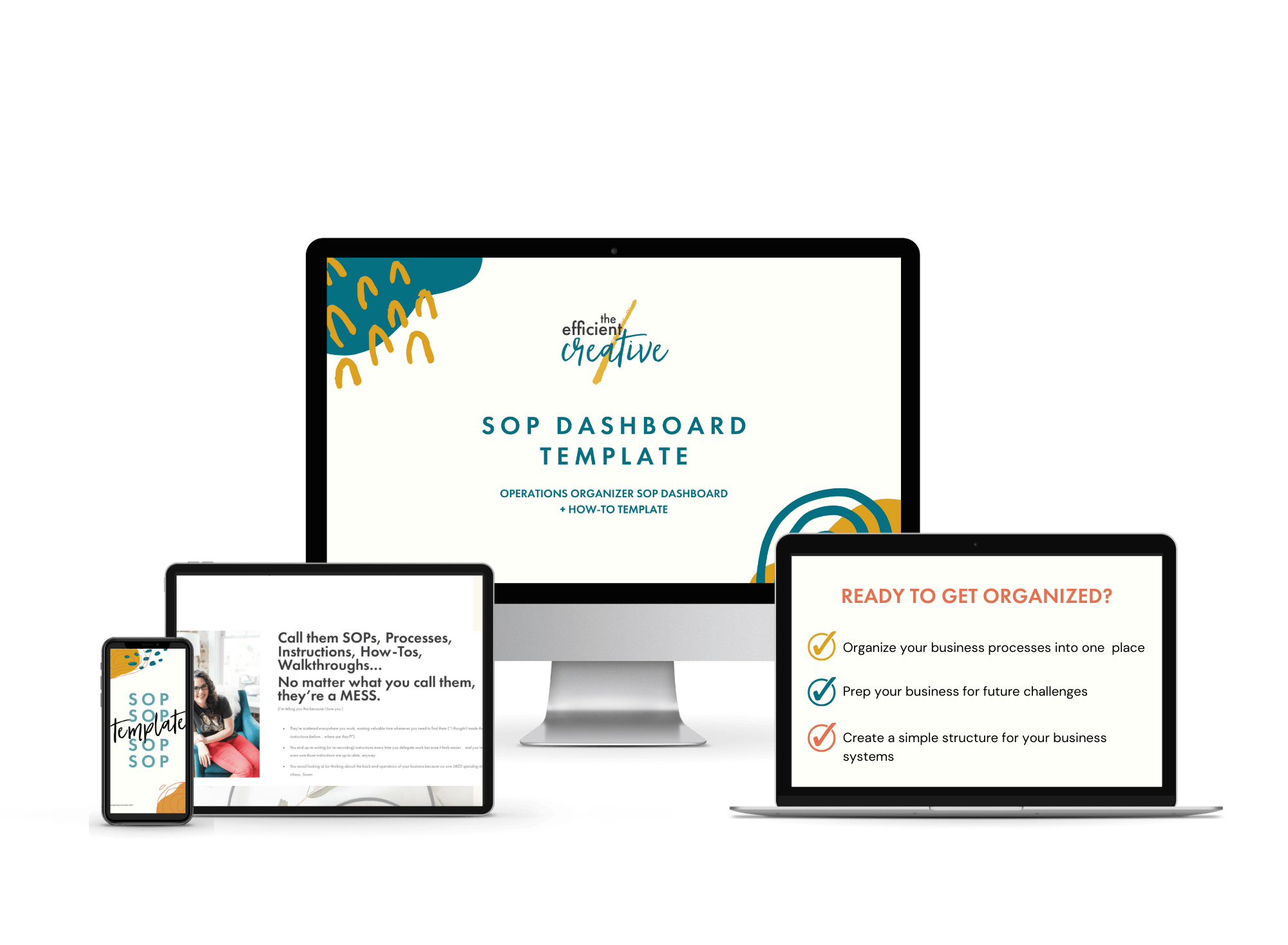How to Strengthen Operations as Your Team (and Business) Grows
If you want your business to continue to grow, you’re going to need help. That’s the long and short of it.
That means you’re going to have to hire help and actually show those people how to do what you do. If you’re a Type A personality (who, me?), trusting someone to do your work or manage your clients’ deliverables can be a huge source of stress. I won’t say that you can make your team growth initiatives flawless, but I do have some good news: You can make managing a team in a growing business a lot more impactful and a lot less stressful by addressing some operational challenges upfront.
People can’t help if you don’t have processes
When you’re hiring, processes are key. New employees or contractors need to know how to do things your way, or how to complete a project in a way that makes the most sense for the rest of your team. Often, when someone says a new hire isn’t working out, it’s because the new hire doesn’t have clear (or any) processes or systems to lean on to do their job correctly!
Process challenges will come up, especially during periods of growth, when you are figuring out how to scale your business and train your team. Of course, you might be wondering, “Is this person just not getting the support they need… or did I make the wrong hire?” You can figure out that by asking yourself:
- Does it feel like you are constantly training/retraining team members?
- Do you keep sending work back to be fixed?
- Do you feel like you/your team are reinventing the wheel with each new lead, client, or project?
- Are you or someone else spending an excessive time writing client emails and drafting proposals?
- Are you struggling to hand off work to other members of your team?
If you answered yes to more than a couple of those questions above, you’re probably facing operational challenges — which can be addressed before you just fire and hire again.
Without clear processes, your team can’t help you do the work, either, and that’s not their fault. Ultimately, that responsibility is yours (and your business manager’s). If you want to overcome those issues, it’s time to create standardized operations.

When you don’t have the right people in the right places
Checklist: how are your team operations?
As the team leader, it’s up to you to assemble a top-notch team that you can trust. But building your team and getting them to work together well is a whole different ball game. You’ll know you may need a time-out if you or your team is constantly:
- Doing tasks that you hate and would like to pass off to someone else (but it keeps falling through)
- Feeling resentful about how you are spending your working time
- Spending more than 30% outside of your high-value skill set (i.e., admin work)
- At capacity or over capacity
- Unable to move forward with a project until you or a team member learns a new skillset
Remember, you’re the team leader with a high-value skill set. You should be doing high-value work like content creation, client deliverables, strategy, planning, and sales! That’s why you are in charge. If you’re not, it’s time to evaluate how your team is working together and make some changes. It may be time to offer more training, find an additional team member, or even replace someone (as much as that sucks).
Not sure if you’ve got the right people in the right places? Start with a team analysis (more on that below.)
When your team isn’t big enough for your business
Checklist: is it time to grow your team?
You may have really strong SOPs — or be well on your way to getting a robust SOP library built. You may have the right people in the right positions on your team. You may feel great about how you’re handling your current workload and how things are being delivered. And still… you can feel like you and your team are struggling.
This happens when a business grows really fast, and it’s frustrating because it can be a really good thing! But if you’re constantly stepping in to:
- Complete client or internal projects because your team can’t do them
- Fulfill orders or onboard clients
- Manage team member deadlines or availability
- Fix things after a client or customer responds negatively
… you might have capacity issues. Here’s how to address it if this is your challenge:
- Hire more help. Don’t drain your well dry. You can’t make people do more work than they can do. That’s when you know that it’s time to hire more people to help. If you don’t have the budget to hire more people, you have two choices. You either need to evaluate the priority levels of the work people are doing (i.e., spending too much time on low-level tasks that don’t help the business), or you need to turn down some work or projects until you have the capacity.
- Do a team analysis. If you want your team to run smoothly, you need people in the right positions (and make their roles clear). A team analysis can help you identify your team members’ strengths and weaknesses to assign work and projects more effectively. If you need some help conducting your team analysis, try out my free Team Skills tool!
SOPs are critical for team and business growth
easier ways to create process documents for your business
Regardless of whether your operations challenges are related to process or team (or both), you need to really think through your SOPs. Creating an SOP bank will help you document your processes and create a scalable system that makes it easy to delegate and increase capacity. SOPs also help team members take ownership of their work and find answers when they struggle.
Of course, creating SOPs can sound really overwhelming — especially when you’re the CEO or owner trying to do it all. I have good news for you, though: You can get your current team to help make the SOP bank as they go. Here are a few ways you can do this.
-
- Use Loom to create videos while you (or they) complete a common task. Then, upload these videos to a shared library for team members to reference.
- Have team members create SOP process documents as they complete tasks and add these to your shared library.
- Limit communication channels. Sticking to exclusive communication methods like Voxer, Asana, emails, and team meetings is a great way to set boundaries and keep everyone updated and on the same page. A standardized method of communication will help build the structure of your operation as your team grows and keep you from tearing your hair out trying to answer messages in five different places!
- Hold regular team meetings to keep everyone updated and on track with the company’s progress.
- Use a task management system BUT don’t stress over which type of system you use. There isn’t a perfect system. My favorites are ClickUp, Asana, and Teamwork. Find the one with the best tools for your team to use every day.
- Stick to your system! Once you decide on a task management system, you’ve got to make everyone stick to using it. Set an example of checking for comments, assignments, and notes every day and have your team do the same. The more you build up solid operational habits like this, the smoother things will go.
Get the help you need to grow with less stress
free operations organizer sop dashboard and how-to template
Let’s call a spade a spade: Growing a business can be incredibly stressful. You will be tested and you will have to learn a lot as the leader and owner. Most of all, though, you’ll need the right processes and people in place to help reduce friction.
Without the right processes and people, you and your team will constantly be stretched to the limit and clients or customers will start to notice. Make sure you’re creating a business that is supportive for you, your team, and the people you serve by building these foundations today. If you need help creating SOPs or understanding your team needs better….
My FREE Operations Organizer can help!
This kit will help you:
- Organize your business processes into one easy-to-find place (no matter where they live in the cloud… and even if you haven’t made them yet)
- Create a simple structure for your business systems that can apply to the tools you’re already using
- Prep your business for future challenges (like when a team member gets sick or you need to hire, like, yesterday)
- Create an easy and consistent process for keeping all of your business docs up-to-date
PLUS, I’m including a bonus How-To Template to make sure you’re giving your team all the information they need to confidently implement your work (more clarity + fewer questions + fewer interruptions + better quality).


